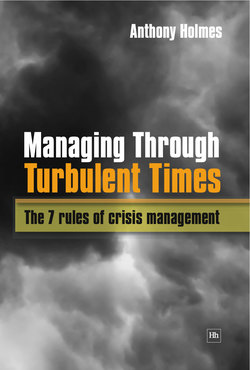Читать книгу Managing Through Turbulent Times - Anthony Holmes - Страница 14
На сайте Литреса книга снята с продажи.
Avoiding inaction
ОглавлениеInaction sometimes seems to be the best option simply because all the other possibilities are replete with risks that you as a manager do not seem able to control.
To continue the boating analogy; the storm is upon you, your GPS system doesn’t work, you have no charts, you’re unfamiliar with the conditions and do not know in which direction safety lies. You have no means of determining which of the options available is best as they all seem potentially risky. A voyage into the unknown. So rather than panic and choose a direction at random you adopt the natural rational human tendency to do nothing unless it appears to offer a clear potential for improving the status quo lest the action you take makes matters worse.
But inaction in the hope of a clearer picture emerging in which you are able to make a rational decision is also highly risky. You may be swamped by the next big wave, the storm may get worse, you may be driven onto rocks, you may be washed overboard, etc.
An understanding of your managerial psychology is a key component in determining the right course of action. You must identify in yourself whether you are being driven to ill-considered activity or inactivity by panic or fear, and factor your emotional state and that of your colleagues into your decision-making process.
If you are inexperienced and the conditions are unfamiliar and hostile, maintaining the maximum flexibility is paramount in case your initial action proves to be wrong.
In turbulent times taking some action is better than taking no action, but failing to recognise the wrong action and not being brave enough or sufficiently flexible to abandon this and adopt a different course is a cardinal error.
Rather than allowing yourself to be consumed by the detail of the current manifestations of the problems you are facing, I suggest that understanding the position of your organisation and the prevailing managerial psychology are the necessary starting points.
You must have an objective assessment of where your organisation lies on its lifespan to determine the characteristics that may inhibit your capacity to implant change. For example, in the UK Woolworths spent perhaps 25 of its 99 years in decline following a long period of maturity. Despite frequent changes of senior management it became seemingly impossible for it to adapt and to abandon its entrenched but no longer viable proposition. Incremental change was perused as if the business was in maturity when what was needed, but resisted forcefully, was radical change in recognition of decline.
Early into the recession of 2008/09 Woolworths collapsed.
You must address turbulence differently depending on the phase of its lifespan your organisation is in.
